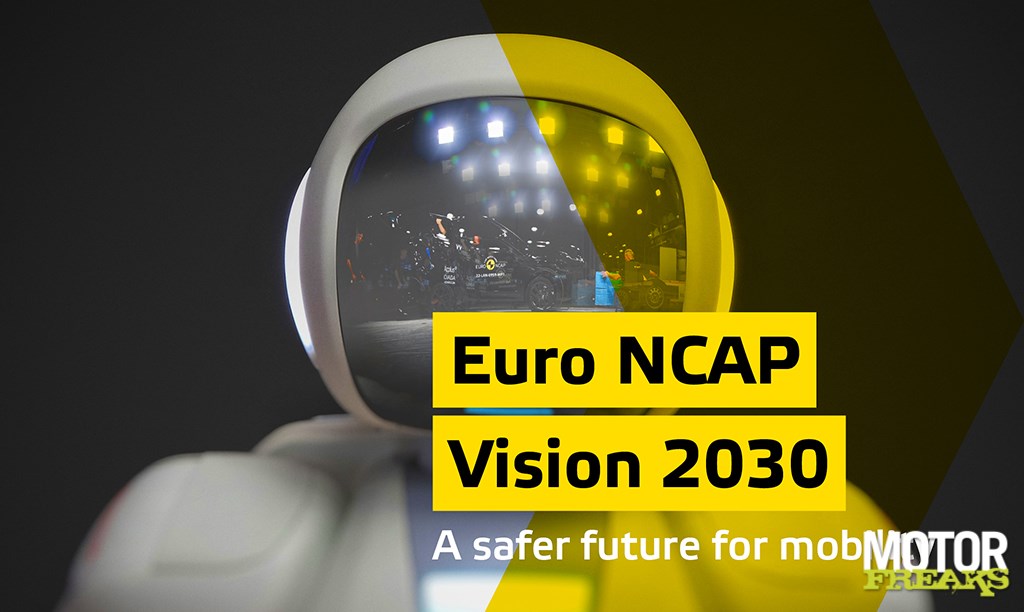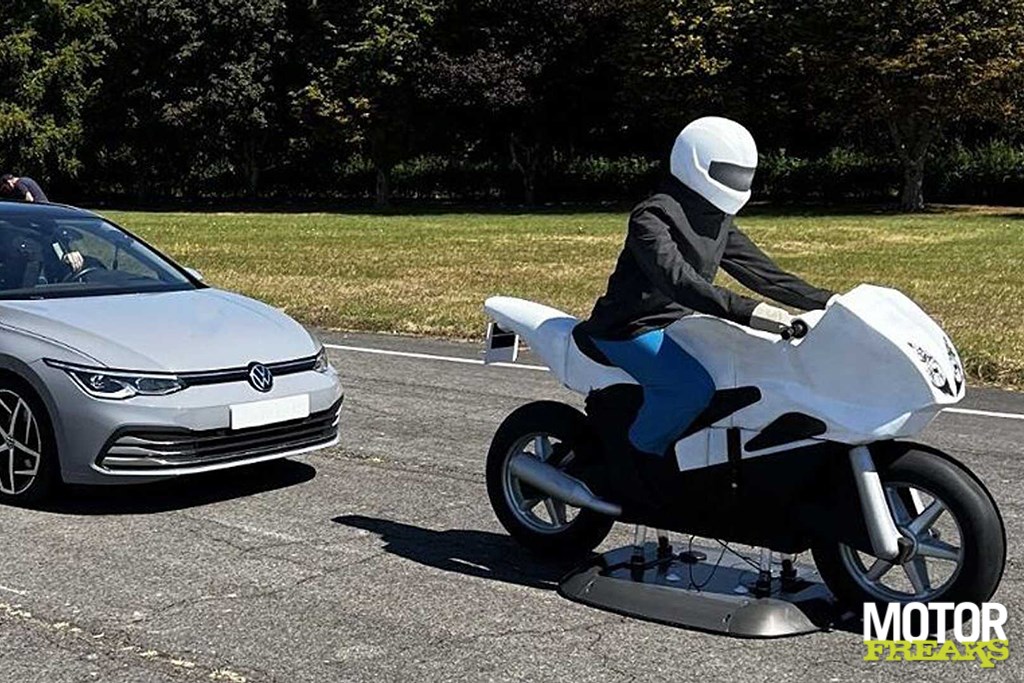Good news from the auto industry. Euro NCAP, the non-profit organization that tests the safety of cars using a 5-star rating system, will also include motorcycles in the testing procedures in the future, according to the Vision 2030 future plan.

Founded in 1997, Euro NCAP (New Car Assessment Program) has become the standard for indicating how safe a car is in the event of a collision, by conducting crash tests on cars. What started with a single frontal crash test has been expanded over the years to include lateral impact and whiplash measurements.
In its new Vision 2030, “a safer future for mobility”, Euro NCAP has now identified key areas of focus for the European new vehicle market for both the existing automotive industry and new industry players not previously involved in Euro NCAP been.
This roadmap puts the focus on vehicle safety for the European industry in the coming decade, but also shows the role Euro NCAP will play in the context of the future mobility landscape. In this roadmap, Euro NCAP also makes a commitment to pursue developments in vehicle safety and testing that reflect the diversity of the European population.
Due to the technological shift towards autonomous assistance systems, the four main areas of the Euro NCAP assessment – in force since 2009 – will be adapted to the four different phases of a potential accident: safe driving, accident avoidance, crash protection and post-crash safety. This change will take effect from 2026.
“The achievements of Euro NCAP in its 25-year history are proof of the continued success and relevance of the programme. Despite major developments in passenger car safety, our work is not done. Euro NCAP is convinced that it has the potential to further improve vehicle safety over the next decade in support of a Vision Zero that strives to eliminate fatalities and serious injuries from traffic accidents.”
“Cars are becoming increasingly sophisticated as manufacturers work towards their goal of autonomous and connected vehicles. We are not yet living in an era of fully self-driving cars, but driver-assisted technologies are becoming widespread. Given the importance of these assisted and automated driving technologies, Euro NCAP will penalize /reward approach for cars that offer these systems. Euro NCAP also wants to include all forms of connectivity and the different technical communication standards in the rating by assessing each safety function as technologically neutral.”
Euro NCAP will phase in virtual testing, improve testing for the protection of vulnerable road users and introduce assessment incentives for a range of driver tracking systems. Key additions to the Euro NCAP program looking ahead to 2030 include:
– Testing and assessment of assisted and automated driver assistance systems
– Assessment of technology that monitors driver limitations and cognitive distractions
– Requirements to further improve the efficiency of speed support technology in practice
– Active safety testing that more closely simulates real-world road environments and explores human-machine interaction (HMI), making for more robust and efficient driver assistance systems
– Testing and assessment of safety functions enabled by V2V, V2I and V2X communication
– Passive safety tests that pay more attention to gender equality and the aging of drivers/occupiers
– Evaluation of fire risk and overheating in electric vehicles and improved information for first and second responders
– Promoting best practices in vehicle security and data access.
“By developing voluntary standards for advanced safety technology in a timely manner, Euro NCAP sees an opportunity to act as a catalyst in accelerating adoption and promoting best practices, not only for passenger cars but also in the fleet. Collaboration with industry is essential and has been key to our success. We look forward to working together to achieve the goals for the next decade.”

Although the above developments at Euro NCAP are quite interesting, we would normally not have paid attention to them, were it not for the fact that Vision 2030 also reads that Euro NCAP will also focus on new programs that improve the safety of motorcycles and scooters,’ powered two-wheelers’, as well as light and heavy trucks, to address the over-representation of these vehicles in fatalities and serious injuries.
Inquiries with the Leuven-based Euro NCAP, Motorfreaks learned that the non-profit organization has quite naughty plans with this. “The ultimate goal is to set up a similar 5-star safety rating system for motorcycles, but that is a much more complex story than for cars,” Adriano Palao, Technical Manager at Euro NCAP told Motorfreaks.
“In the first instance, the current driver assistance systems will have to be mapped out and what their effect is. It is not the case that by definition every driver assistance system actually has a positive effect on safety. It may be the case that a motorcycle without assistance systems in certain situations is safer, so we will have to find out in the first instance.”
In addition to the fact that there are currently many different systems, many of which are still fresh on the market and therefore still in the development phase (think of adaptive cruise control), every motorcycle and every motorcyclist is different and a lot of research will therefore have to be done before a assessment system can be set up. “If we set something up, it has to be in a way that appeals to bikers, where bikers really see the point, otherwise it could be counterproductive,” says Palao.
In the short term, however, things will be set in motion. For example, from next year crash tests will also use a dummy motorcycle, which will collide with a car at a speed of 80 km/h, to analyze the impact of the crash on both vehicles. In the future, this could lead to adjustments in cars to increase the safety of motorcycles and scooters, just as is done now with pedestrians and cyclists.
In addition, a start is being made with research into the effect of driver assistance systems and crash analyzes of motorcycles, by actually crashing motorcycles under controlled conditions. For this, Euro NCAP is in consultation with ACEM, the European Association of Motor Manufacturers, which is very positive about the plan.

– Thanks for information from Motorfreaks.